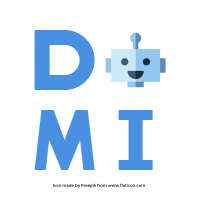前情提要:
question:
在做 speech recognizer 時
President Kennedy 和 precedent Kennedy 的發音很像
該如何讓speech recognizer 知道答案為President Kennedy?
answer
| Notation | Meaning | e.g. |
|---|---|---|
| $H$ | hypothesis | President Kennedy precedent Kennedy |
| $D$ | speech signal | |
| $P(H)$ | language model |
用 noisy channal model
使找到的解答滿足:
$\hat H =
\underset{H}{\arg\max} P(H|D) =
\underset{H}{\arg\max} \frac{P(D|H)P(H)}{P(D)} =
\underset{H}{\arg\max} P(D|H)P(H)$
要如何優化 $P(H)$ , 使之更 generalization 便是今天要探討的問題
using clustering improving a language model
模型假設
- bigram model
- Markov assumption
| Notation | Meaning | Remark |
|---|---|---|
| L | corpus | L = $w_1,…w_N$ |
| $\pi$ | function | assign word to cluster |
目標
find function $\pi$
s.t minimize $H(L, \pi)$
(白話翻譯: 找到一個分類函數 使之最小化 對下個字預測的不確定性)
Question: 要如何最小化$H(L, \pi)$?
$H(L, \pi) = -\frac{1}{N}logP(w_{1,…N})$
經過 課本 510-511頁一連串的推導後可得
$H(L, \pi) \approx H(W)-I(c_1; c_2)$
Remark: $I(c_1; c_2)$: mutual information between adjacent clusters
因此 最大化 $I(c_1; c_2)$ 即可使 $H(L, \pi) 最小$
Question: 要如何分群使$I(c_1; c_2)$的值最大?
用bottom-up algorithm來分群,
用mutual information loss 當作loss
MI-loss($c_i$, $c_j$) = $\sum_{c_k \in C\setminus{c_i, c_j}} I(c_k;c_i) + I(c_k;c_j) - I(c_k;c_i\cup c_j)$
每次迭代將loss最小的兩群做合併
持續迭代到剩下k群為止(k為給定的參數 課本是給1000)
Remark: 此演算法不能保證找到最佳解
Is cluster-based language model work?
課本給出的結果如下:
| model | perplxity |
|---|---|
| cluster-based language model | 277 |
| word-based model | 244 |
| linear interpolation between the word-based and the cluster based model | 236 |
